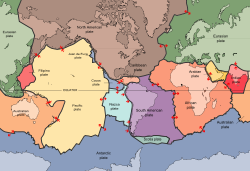Portal:Science
| Main page | Categories & Main topics | Related Portals & WikiProjects | Things you can do |
Science is the methodical study of nature including testable explanations and predictions. An older and closely related current meaning emerged from Aristotle, whereby "science" referred to the body of reliable knowledge that is logically and rationally explained (see "History and etymology" section below).
Since classical antiquity, science as a type of knowledge was closely linked to philosophy. In the West during the early modern period, the words "science" and "philosophy" were sometimes used interchangeably. Not until the 17th century did natural philosophy emerge as a separate branch of philosophy, which is today called "natural science". "Science" continued to denote reliable knowledge about a topic; it remains in use in modern terms such as library science or political science.
Today, the ever-evolving term "science" refers to the pursuit of knowledge, not the knowledge itself. It is often synonymous with "natural and physical science" and often restricted to those branches of study relating to the phenomena of the material universe and their laws. Although the term implies exclusion of pure mathematics, many university faculties include Mathematics Departments within their Faculty of Science. The dominant sense in ordinary use has a narrower use for the term "science." It developed as a part of science becoming a distinct enterprise of defining the "laws of nature"; early examples include Kepler's laws, Galileo's laws, and Newton's laws of motion. In this period it became more common to refer to natural philosophy as "natural science." Over the course of the 19th century, the word "science" became increasingly associated with the disciplined study of the natural world, including physics, chemistry, geology and biology. This sometimes left the study of human thought and society in a linguistic limbo, which was resolved by classifying these areas of academic study as social science. For example, psychology evolved from philosophy, and has grown into an area of study.
Currently, there are both "hard" (e.g. biological psychology) and "soft" science (e.g. social psychology) fields within the discipline. As a result, and as is consistent with the unfolding of the study of knowledge and development of methods to establish facts, each area of psychology employs a scientific method. Reflecting the evolution of the development of knowledge and established facts and the use of the scientific method, Psychology Departments in universities are found within: Faculty of Arts and Science, Faculty of Arts, and a Faculty of Science. Similarly, several other major areas of disciplined study and knowledge exist today under the general rubric of "science", such as formal science and applied science.
| More about Science... |
Selected article
The outermost part of the Earth's interior is made up of two layers: above is the lithosphere, comprising the crust and the rigid uppermost part of the mantle. Below the lithosphere lies the asthenosphere, which is a more viscous zone of the mantle. Although solid, the asthenosphere has very low shear strength and can flow like a liquid on geological time scales. The deeper mantle below the asthenosphere is more rigid again.
Selected picture
A Tesla coil is a category of disruptive discharge transformer coils, named after their inventor, Nikola Tesla. Tesla coils are composed of coupled resonant electric circuits. Nikola Tesla actually experimented with a large variety of coils and configurations, so it is difficult to describe a specific mode of construction that will meet the wants of those who ask about "Tesla" coils. "Early coils" and "later coils" vary in configuration and setup. Tesla coils in general are very popular devices among high-voltage enthusiasts.
Selected biography
Among his many investigations were: capillary action, his special theory of relativity which stemmed from an attempt to reconcile the laws of mechanics with the laws of the electromagnetic field, his general theory of relativity which extended the principle of relativity to include gravitation, relativistic cosmology, critical opalescence, classical problems of statistical mechanics and problems in which they were merged with quantum theory, including an explanation of Brownian motion; atomic transition probabilities, the probabilistic interpretation of quantum theory, the quantum theory of a monatomic gas, the thermal properties of light with a low radiation density which laid the foundation of the photon theory of light, the theory of radiation, including stimulated emission; the construction of a unified field theory, and the geometrization of physics.
Did you know...
- ...that space artist Jon Lomberg (artwork pictured) was Carl Sagan's principal artistic collaborator on many projects such as Cosmos and the Voyager Golden Record?
- ...that NASA astronaut Stephen Robinson has logged 497 hours in space?
- ...that Othniel Charles Marsh named two species of the dinosaur Coelurus from the same quarry, not knowing that the bones belonged to the same skeleton?
- ...that the type specimen of Dromicosuchus had damage to its jaw and neck that may have been inflicted by the teeth of the large carnivore it was found underneath?
- ...that the scientific name of the common Australian garden fungus Aseroë rubra means 'red disgusting juice'?




